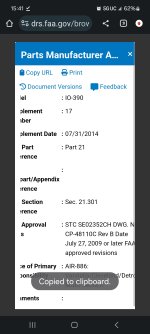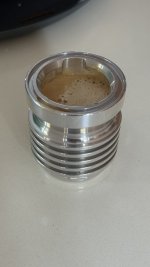First off, well done Dan! I love a good test with factual data. Very interesting thread.
I do have a couple observations:
1. The data provided in one of the early posts, with an excerpt from SAE 881825, states that the most damaging particle size is in the 2-22µm range - where particle size exceeds Oil Film Thickness (OFM), however none of the filters tested provided any great efficacy in that particle range, although I am impressed with the Wix filter performance.
2. K&P clearly states on their website that their filter mesh is 35µm, yet there are several, if not many, posts showing surprise and/or dismay, along with several disparaging comments that the filter doesn't provide desired filtration at or below the designed particle size and that it should be tossed, disregarded, etc... (although I especially liked the beverage repurposing idea). This test focused on particle size < 40µm, however I think it would provide a more valuable review of the filter's performance to be tested in the particle range the manufacturer claims it was designed for.
3. The gram loading vs PSI chart is very informative. Lots of discussion around bypass pressures, but it appears a 8-11 psi bypass relief is more than adequate. Incidentally, I received an email from Dave Fisher at K&P several years back saying their bypass started opening at 15# and was fully open at 20#.
I did an experiment of the Challenger CH48109C filter using my own airplane starting in 2013. I bought one and put it on the right engine of my Baron and then continued to run a Tempest 48109 filter on the left. I did this for a 50 Oil Change Interval (OCI) and then swapped sides. I did this for 10 OCIs, performing oil analysis at each OCI, and then finally just left it in service on the left engine. The result was insignificant changes in wear metals over those 10 periods with variations +/- few ppm each sample. I still have that CH48109C filter and it's in good shape after about 1200 hours of service.
The right engine was overhauled at 2450 hours based on cracks found on the case at #3 cylinder. We then overhauled the left engine at 2641 hours and both the rod and main bearings looked good. The camshaft needed to be reground and we installed all new cylinders, but I saw nothing to indicate anything other than normal wear over the overall period of that engine.
My take-away from my own experience is that the K&P filters do a fine job of filtration in their intended range. Something I didn't see mentioned in this thread is that the K&P (Challenger) filters have a permanent rare earth magnet that does a great job and provides immediate indication of any ferrous debris.
I hadn't considered the Wix 51515XP and didn't realize they were using synthetic media, I'm very interested in how that compares with the standard paper elements in a head-to-head experiment.
This thread is very good to highlight the importance of not just which filter, but doing oil changes at regular intervals AND pay just as much attention to air intake filtration. Keeping particles from entering the engine is just as important, if not more so, as removing it from the oil, and most importantly, the value of oil analysis.
Thanks again Dan and everyone who funded the testing.



